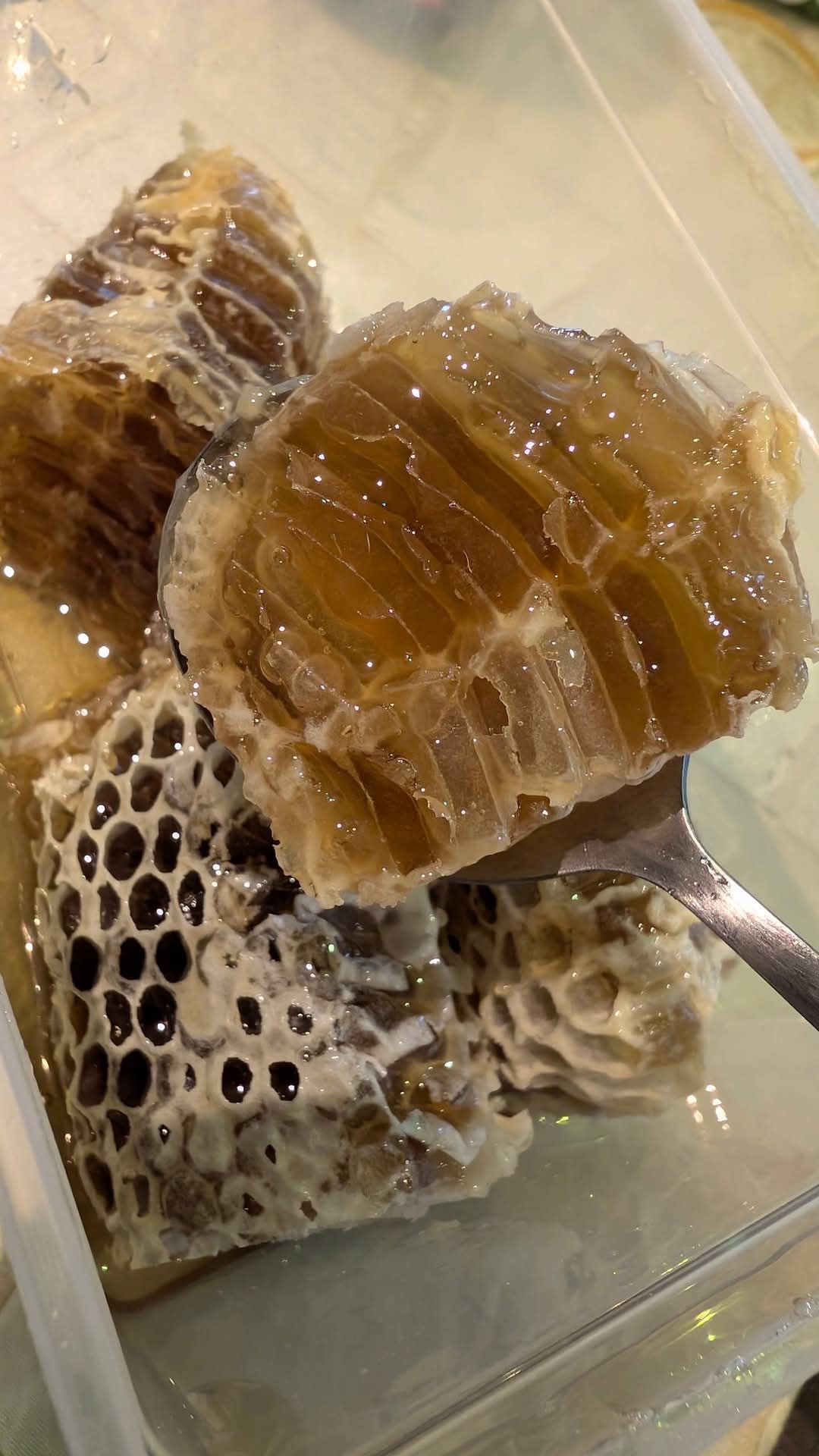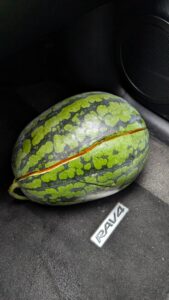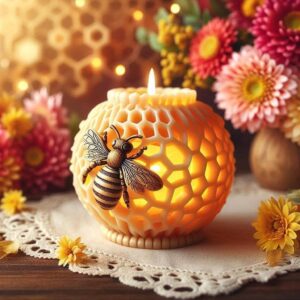I remember when I was traveling in Japan in the past, some better hotels provided a whole piece of honeycomb honey for everyone to use as they wish for breakfast.
A while ago, when I was wondering where to buy this thing, a message popped up on Facebook saying that a nearby beekeeper was selling it in limited quantities.
I drove over to buy some and asked the local beekeeper how this honey was different from regular honey.
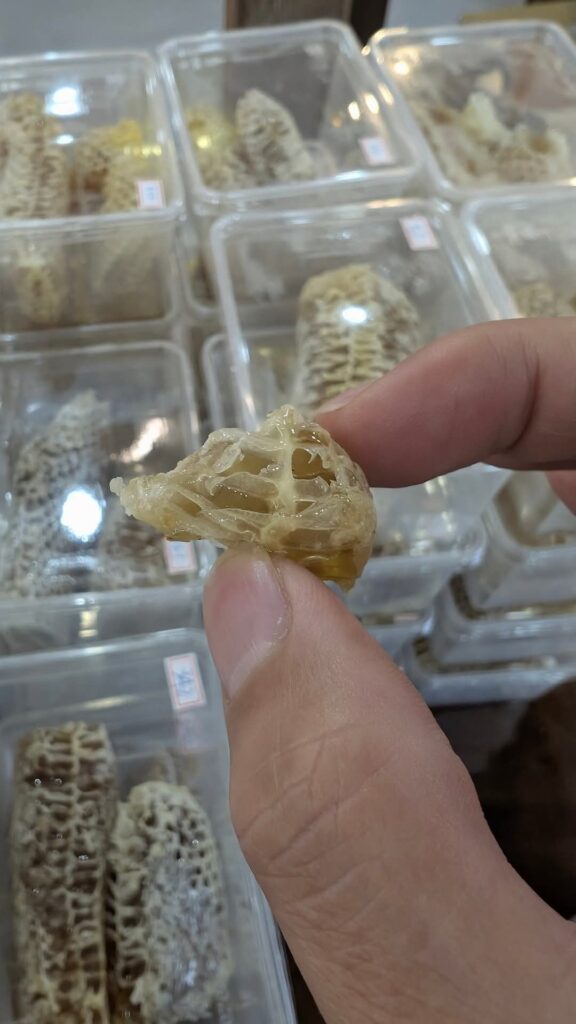
The general way to extract honey is, as you and I all know, to take out the wooden honeycomb grids in the beehive, put them into a centrifuge and spin them at high speed to get them out.
Honeycomb honey is formed when bees take too much nectar, resulting in insufficient storage grids, and the nectar grows outwards due to stacking.
Because the proliferated part is too heavy, it will cause problems with balance and cannot be directly put into the centrifuge to spin and extract honey.
Therefore, when beekeepers extract wooden honeycomb grids, they will cut off the excess honeycombs along the edges and then sell them together with the honeycombs, which is commonly known as honeycomb honey.
However, this requires special conditions for mass production of nectar to grow, so it is not a product that is often available and is a limited edition product that is hard to come by.

The local beekeeper told me that sometimes there may not be an increase in growth for two years, so if you see some, buy more.
It can usually be stored in a cool place for three months, refrigerated for six months, or frozen for a year. However, it needs to be brought back to temperature after being taken out before it can be eaten.
As for its special effects, I will not elaborate on them and let those who are interested search for them on the Internet.
Honeycomb is actually beeswax, a substance secreted by glands in the abdomen of bees.
Bees use their forelimbs and jaws to chew and process the beeswax into sheets or filaments, which are used to build hives and seal the hive contents.
It is mainly composed of ingredients such as esters and fatty acids; it contains natural moisturizers and has antibacterial and antiseptic properties.
It is mainly used to build and maintain the structure of the beehive, including the enclosure and protection of the cells and hives, as well as to control temperature and humidity.
Bees also use beeswax to seal nectar and pollen in the hive to prevent water loss and block air from entering.
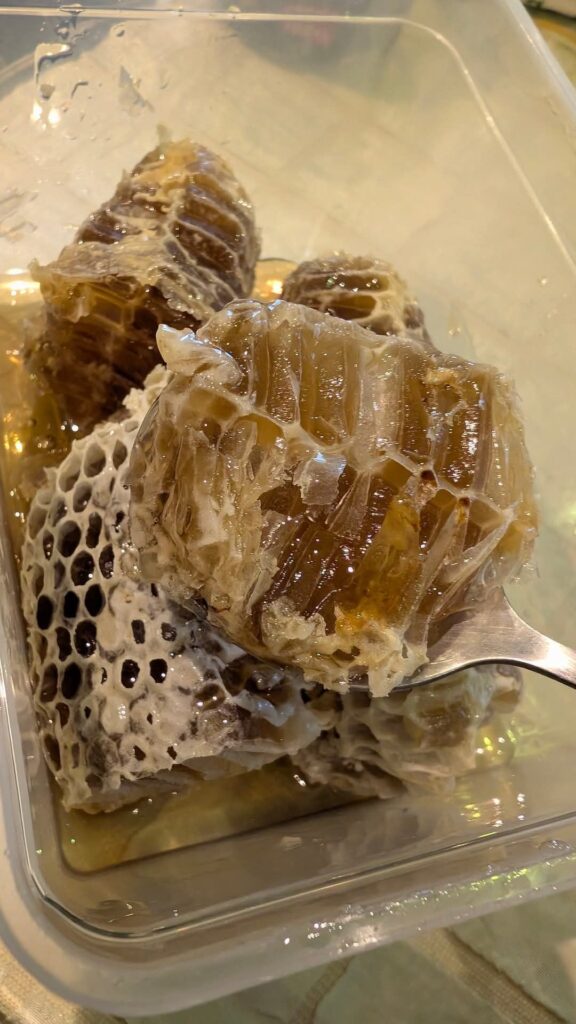
People often ask if beeswax is edible?
The answer is of course you can eat it!
But basically it has no nutritional effect on the human body, and it will not be absorbed by the human body. It tastes like tasteless chewing gum when chewed, but it will only decompose and reassemble in your mouth. If you really swallow it, it will be just like the enoki mushrooms. See you tomorrow!
Beeswax is often used to make products such as honeycomb honey and beeswax candy; in beauty and skin care, beeswax is added to lip balm and moisturizer to provide moisturizing and protection.
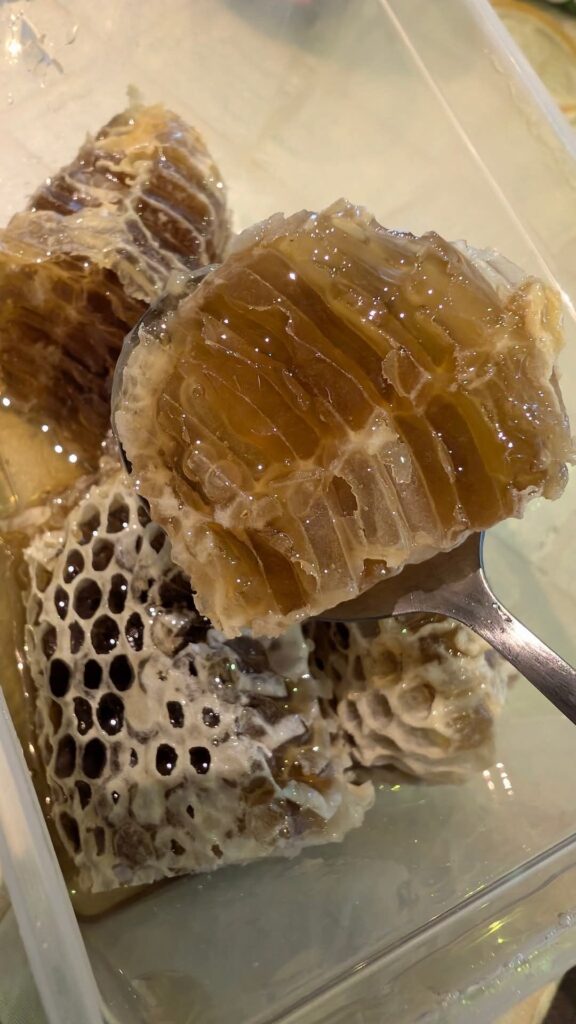
However, on the Internet, you can see a lot of places selling honeycomb honey, but you may need to check it yourself to see whether it is truly natural honeycomb honey or a black-hearted honeycomb made from processed petroleum!
This website does not have those annoying ads that block the webpage and hinder reading!
If you think the article I wrote is helpful to you, could you please fill in a Questionnaire, allowing me to better understand everyone’s needs and write more high-quality content.





